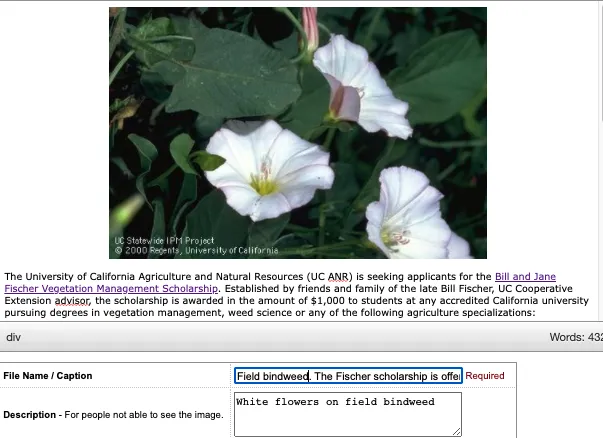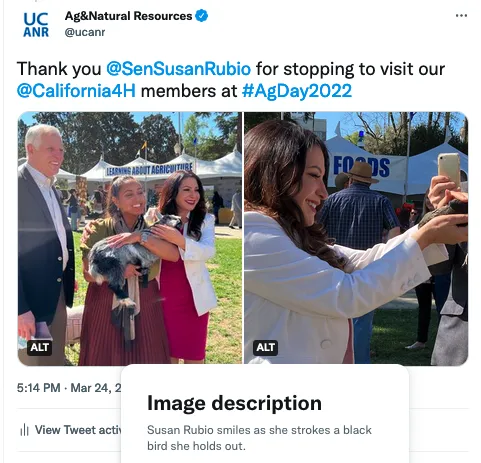How accessible is your website?

The more accessible we make our information, the more people can use the information to improve their businesses and lives. In addition to accessibility being required by law for UC, making websites and social media posts accessible is also important for search engine optimization, according to Lucy Greco, UC Berkeley accessibility evangelist.
Greco recently gave a presentation for UC social media managers.
“We define accessibility as everyone being able to read, use, and act on all of our digital assets,” said Greco. “Everyone includes people with all levels of abilities.”
Some users may have difficulty accessing information due to:
- Low vision or blind
- Hand and or other physical disabilities
- Deaf or hard of hearing
- Reading disabilities
- English as a second language
To make photos and PDFs accessible, use alt text to describe images and include all text for screen readers. Videos should include captioning.

UCOP offers an online course with insights and best practices for making online information more accessible.
Before starting the course, you must login to siteimprove.ucop.edu using your UC credentials[MH1] .
Once you have successfully logged in, a pop-up should appear to go to the Siteimprove Academy – click on that, then click on https://siteimprove.litmos.com/course/3535108?r=False&ts=637786992813244419 and it should take you straight to the course.
